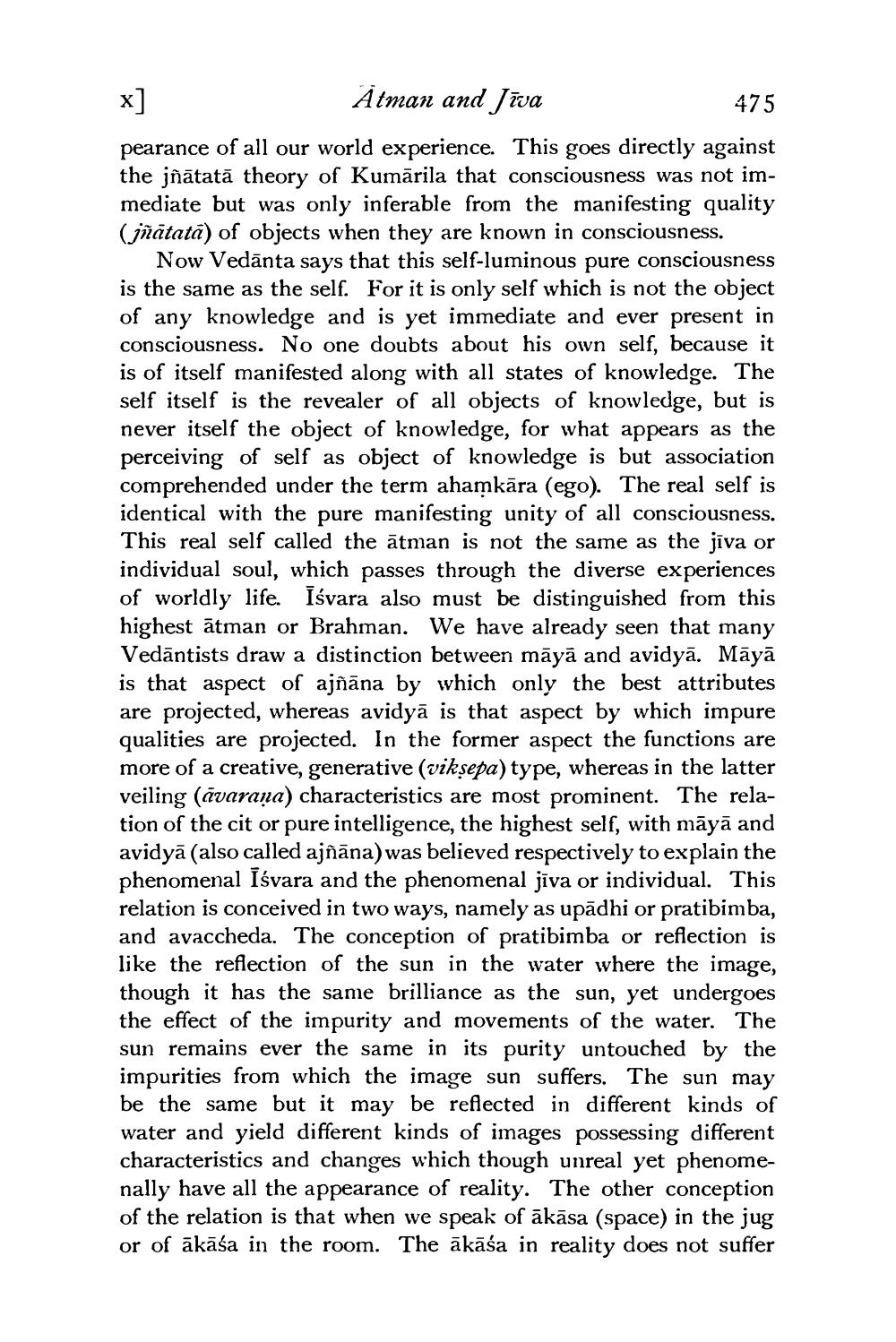________________
x]
Atman and Jiva
475
pearance of all our world experience. This goes directly against the jñātata theory of Kumārila that consciousness was not immediate but was only inferable from the manifesting quality (jñātata) of objects when they are known in consciousness.
Now Vedanta says that this self-luminous pure consciousness is the same as the self. For it is only self which is not the object of any knowledge and is yet immediate and ever present in consciousness. No one doubts about his own self, because it is of itself manifested along with all states of knowledge. The self itself is the revealer of all objects of knowledge, but is never itself the object of knowledge, for what appears as the perceiving of self as object of knowledge is but association comprehended under the term ahamkāra (ego). The real self is identical with the pure manifesting unity of all consciousness. This real self called the atman is not the same as the jiva or individual soul, which passes through the diverse experiences of worldly life. Iśvara also must be distinguished from this highest ātman or Brahman. We have already seen that many Vedāntists draw a distinction between māyā and avidyā. Māyā is that aspect of ajñāna by which only the best attributes are projected, whereas avidya is that aspect by which impure qualities are projected. In the former aspect the functions are more of a creative, generative (vikṣepa) type, whereas in the latter veiling (avaraṇa) characteristics are most prominent. The relation of the cit or pure intelligence, the highest self, with māyā and avidyā (also called ajñāna) was believed respectively to explain the phenomenal Iśvara and the phenomenal jīva or individual. This relation is conceived in two ways, namely as upādhi or pratibimba, and avaccheda. The conception of pratibimba or reflection is like the reflection of the sun in the water where the image, though it has the same brilliance as the sun, yet undergoes the effect of the impurity and movements of the water. The sun remains ever the same in its purity untouched by the impurities from which the image sun suffers. The sun may be the same but it may be reflected in different kinds of water and yield different kinds of images possessing different characteristics and changes which though unreal yet phenomenally have all the appearance of reality. The other conception of the relation is that when we speak of ākāsa (space) in the jug or of ākāśa in the room. The ākāśa in reality does not suffer




